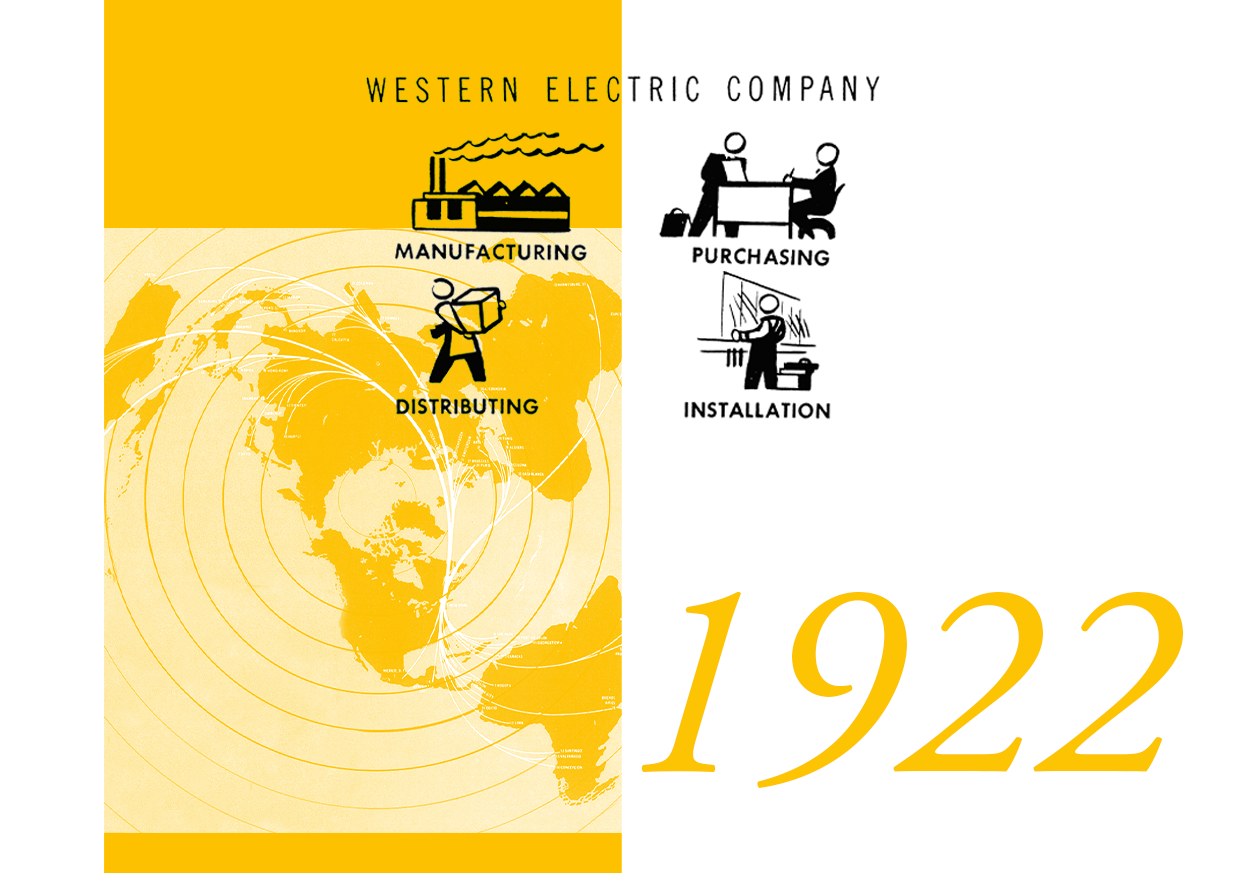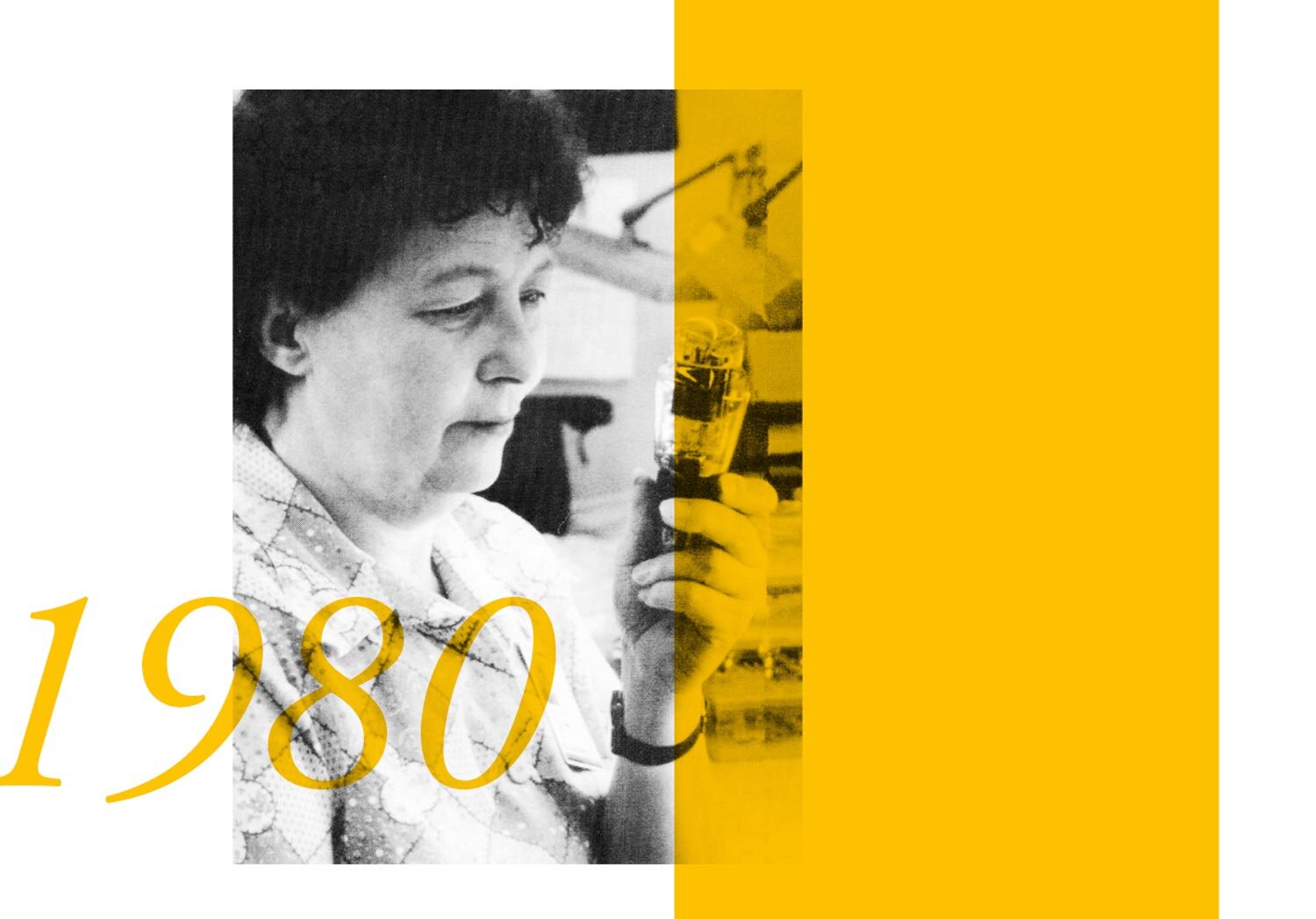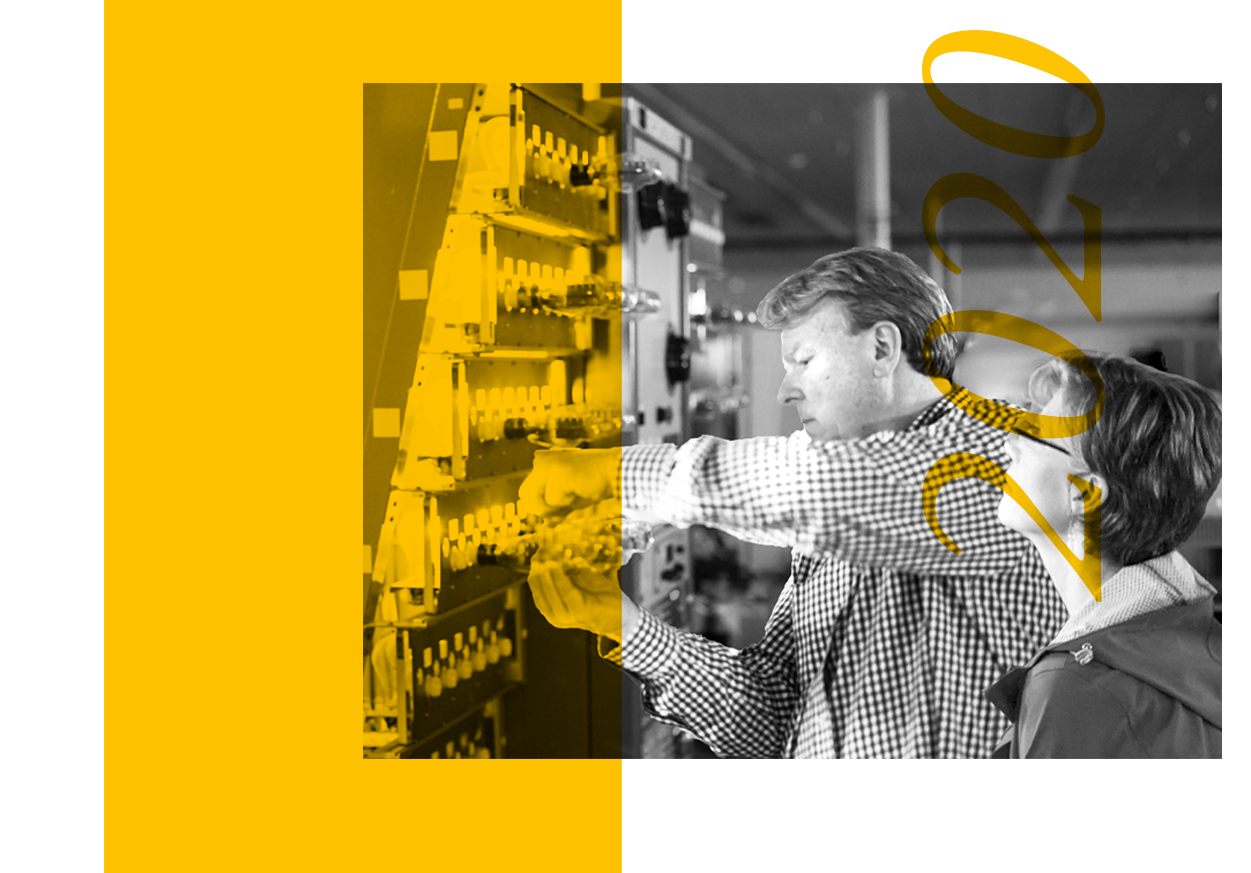Company History
Our story is unexpectedly rich and eclectic. This narrative-style timeline pays respect to the people, places, and events that electrify what we do today.
1869
An entrepreneur, Enos Barton and an inventor, Elisha Gray, partnered to supply a rapidly expanding world of electricity and communications with quality manufacturing. Booming demand for equipment was good for business. But Barton and Gray’s small Cleveland workshop was also a place for imagination, buzzing with creative energy. This is the original vision of Western Electric.
1872
The Western Electric Manufacturing Company is established after a move to Chicago. Orders for electrical equipment surged. The name grew in recognition and became associated with dependable quality and original design, supplying big names like Western Union and Morse Telegraph Instruments.
1876
Alexander Graham Bell files the first patent for the telephone, demonstrating it in the same year to the public at the Centennial Exposition in Philadelphia. There, Western Electric won five first-class awards—no small feat for a company less than ten years old and with only sixty-five people on payroll.
1877
The American Bell Telephone Company forms. By 1882, Western Electric had become a major manufacturer for American Bell, the start of a historic partnership and a new era of innovation and growth for the company. To meet new demand, Western Electric began operations in New York City, setting up shop in a former Western Union building.
1901
Western Electric becomes exclusive supplier, purchaser, and distributor for AT&T and its subsidiaries, organized as the Bell System. By now, 600,000 telephones had been manufactured and installed. By 1910, that number would increase to 5.8 million.
Elisha Gray passes away. Enos Barton, who shared in Gray’s vision to lead the dawning electrical age, would pass away in 1916.
1905
The legendary Hawthorne Works, the first of over 20 massive factory complexes, opens outside Chicago. At the height of its operation, the Hawthorne Works was a fully functioning city, complete with its own power plant, fire department, retail stores, and a recreation center.
1906
Lee De Forest, a former Western Electric employee, first demonstrates the “Audion” tube. His primitive device showed the world how to effectively harness thermionic emission—the underlying physics of vacuum tube technology. At the time, he didn’t realize the crucial role it would play in the future of sound.
1912
Dr. Harold Arnold and a team of Western Electric engineers witness an erratic, but promising demonstration of the “Audion.” They quickly grasped what De Forest had achieved, bought the patent, and within months invented the first high vacuum tube. Its first practical application? The amplification of sound.
1915
Led by Arnold and his team of engineers, Western Electric establishes the first transcontinental phone lines from New York to San Francisco. Among the team is Edwin H. Colpitts, the father of push-pull amplification. The engineering department’s advancements in tube amplification not only gave us modern communications, they laid the foundation for radio, film sound, television, and hi-fi sound recording and reproduction.
1916
Edward Christopher (E.C.) Wente and Albert Thuras developed the breakthrough condenser microphone for Western Electric. These unsung legends in the history of sound also transformed speaker design with the 555W, the first high-frequency compression driver, in 1926. Moviegoers would marvel at the most lifelike sound they had ever heard.
1922
The British Broadcasting Corporation (BBC) airs its first daily radio service. Western Electric, whose operations in the British Isles date back to 1883, helped organize the BBC. In Japan, the Nippon Electric Corporation (NEC) continues a partnership with Western Electric begun in 1899. By partnering with rapidly industrializing nations, Western Electric proves itself as a global leader in quality.
1925
The Western Electric engineering department, originally organized in 1907, becomes Bell Laboratories.
1926
In the heated race to synchronize moving pictures and sound for a booming Hollywood industry, Western Electric wins with the premiere of Don Juan. It was the riskiest, most expensive Warner Brothers production to date. “Vitaphone,” “Wide Range Sound,” and “Mirrophonic” sound equipment rounded out Western Electric’s high-fidelity endeavors through 1937.
1938
The 300B is first commissioned. By now, Western Electric is trusted worldwide for its unbeatable standards in thermionic tube manufacturing. AT&T’s intense demands for longer-lasting, workhorse triodes like the 300B fueled research and pushed the boundaries of electrical engineering.
1941
Commercial business takes a back seat after the bombing of Pearl Harbor. Bell Labs and Western Electric devote themselves to the war effort, taking on massive military contracts from 1942-1945. By doing its part during WWII, Western Electric further established itself as an all-American manufacturer.
1947
The transistor is successfully demonstrated at Bell Laboratories. It soon replaced vacuum tubes as the new workhorse in electronics. The MOSFET, also developed at Bell Labs, would form the backbone of the digital age. To this day, it is the most manufactured device in history.
1948
The long-playing record, or LP, is introduced by Columbia. Based on technology developed by Western Electric for film sound, it would become the longtime standard for music listeners. Ten years later, stereophonic LP’s and playback would be popularized, bringing better, more lifelike studio sound into the home.
1952
A little-known partnership with Sony begins. Co-founder Masaru Ibuka visits the US to explore a changing tech landscape after the transistor’s invention. Ibuka, still skeptical of its practical use, takes a leap by meeting with Western Electric to discuss R&D possibilities. He secured patent rights for Sony, helping Japan become the electronics giant it is today.
1959
“Ben-Hur” breaks records at the Academy Awards with eleven wins including “Best Sound.” The Western Electric name in film sound, “Westrex” (originally known as Electrical Research Products Inc. or ERPI), would appear in the opening credits of countless movies made during Hollywood’s Golden Age.
1961
The Western Electric Kansas City Works is established. Machinery originally built for tube assembly at this facility remains in operation to this day at the Rossville Works.
1962
James West and Gerhard Sessler invent the electret condenser microphone at Bell Labs. The vast majority of microphones used today are electrets. Western Electric was the original supplier and manufacturer for this milestone in the history of electrical sound recording.
1971
Between this year and 1950, Bell Labs and WE continued making contributions to national defense and space programs through research and engineering. Back in Hollywood, Westrex engineers celebrated their thirty-sixth Oscar win for “Fiddler on the Roof.”
1977
Star Wars premieres, introducing many to Dolby Stereo for the first time. These newfangled, low-noise Dolby systems which relied on Westrex designs, would become the new standard for cinema by the mid 1970s. Collectors who sought to recapture the original hi-fi sound of the 1930s and 40s flocked to salvage the junked equipment.
1980
With more and more trendy, solid state electronics arriving on the scene like the Sony Walkman, the way people listened to music was quickly changing. But amidst all the “new”, high fidelity never went away. A growing group of analog holdouts and hi-fi newcomers enjoyed continuous rediscovery of old WE tech like the 300B electron tube and single-ended sound.
1984
The Bell System is officially disbanded in a landmark consent decree with the United States government. The Western Electric name is abandoned by AT&T. Its operations were reorganized in various forms in a dramatic close to an epic corporate partnership.
1988
Western Electric employees at the Kansas City Works manufactured what they thought would be their last batch of 300B’s. The famous triode, still burning with hi-fi mystique, was hunted by serious music lovers around the world, notably Japan and France, in their search for a pair to complement single-ended amplifier designs.
1992
As the worldwide resurgence of tube sound continues, entrepreneur Charles G. Whitener of Westrex Corporation, approaches AT&T to acquire intellectual property and a license to manufacture and sell vacuum tubes and audio equipment under the Western Electric name.
1995
After years of negotiation, AT&T grants Whitener the Western Electric brand license to manufacture vacuum tubes and audio equipment. He would obtain engineering drawings from Bell Labs and begin setting up tube manufacturing in Kansas City.
1996
Whitener finalizes purchase of Western Electric intellectual property and equipment to manufacture and sell the 300B vacuum tube, among other types, with the help of former Kansas City Works employees. That year, Whitener successfully demonstrated the 300B to audio equipment manufacturers at the Consumer Electronics Show in Las Vegas.
1997
The newly created run of 300B electron tubes begins shipping worldwide. The original name in high fidelity had returned to the scene and a new generation of listeners could experience the emotional impact of tube sound. Japan’s MJ Audio magazine names 300B “Product of the Year.”
2003
300B manufacturing continues at a Huntsville, Alabama facility to meet continued demand. Between this year and 2012, Western Electric focused on serving contracts for the United States Department of Defense, supplying tubes (6EJ7, 577W, 576A) and test sets to the U.S. Naval Surface Warfare Center.
2004
Western Electric introduces new high fidelity audio equipment like the 203C CD Player and amplifiers.
2013
Western Electric moves its headquarters to Rossville, Georgia to begin planning a newly imagined manufacturing facility for tubes and various other high-fidelity equipment.
2016
Control and ownership of all remaining intellectual property rights under the Western Electric trademark are transferred to Westrex Corporation from Alcatel-Lucent, successor of Western Electric’s telecom operations.
2017
Renovations begin at a new Rossville, Georgia property to clear the way for a new tube assembly operation. The vision of this new facility is to modernize 300B manufacturing, introduce additional tube lines, and house research and design of new products—all under the proud Western Electric name.
2018
The Rossville Works facility is officially established. This year marks the 80th anniversary of the 300B electron tube. To further celebrate, the 91E Integrated Amplifier, a powerful, single-ended companion to the 300B, is successfully demonstrated at major trade shows in Chicago and Munich.
2020
After completing updates to machinery, new employee training, and across-the-board quality checks, the first batches of 300B electron tubes are shipped. Despite pandemic setbacks, new hiring and training continues in an effort to fulfill a deep back-log of orders.
2021
Manufacturing capacity at the Rossville Works stretches beyond the 300B. A new wing at the 40,000 square foot facility is outfitted for amplifier assembly. Remaining space is dedicated to specialized parts manufacturing under outside, private contracts.
2022
In January, the 91E Integrated Amplifier begins shipping worldwide. Stereophile magazine praises the amplifier’s balance of modern circuit design and classic SET power. In March, Western Electric announces plans to to expand tube manufacturing efforts. An online survey is posted to gauge public interest and in less than two weeks, 30,000 people respond with encouragement and support for American-made tubes.
2023
This year marks the 85th anniversary of the 300B. As long as the demand for quality sound continues, so will Western Electric manufacturing.








































